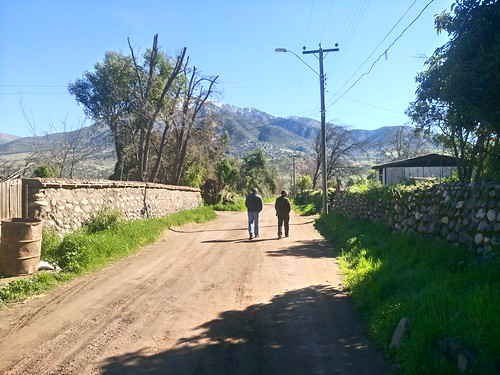Ly. In particular, bones that have been buried are subjected to microorganisms, fungi and humic acid that will accelerate degradation of the DNA. However, as approximately 400 bp fragments could be amplified from the ulna sample, the remains appear to be relatively well preserved, perhaps because they  were not buried in soil for a very long period. The indication of degradation makes it less likely that the products are a result of modern contamination. Moreover, the cranial bone seems to be somewhat more degraded than the ulna bone, as only a few of the intermediate sized fragments could be amplified. In addition, when an organism dies, intracellular enzymes such as nucleases break the DNA molecule into short fragments. All these factors complicate a molecular analysis of aged skeletal remains. For theseAcknowledgmentsThis work was generously supported by a grant from the Kjell and Marta ?Beijer Foundation. Likelihood ratios were kindly calculated by Dr. Andreas Tillmar at the National Board of Forensic Medicine in Linkoping. ?Author ContributionsConceived and designed 15481974
were not buried in soil for a very long period. The indication of degradation makes it less likely that the products are a result of modern contamination. Moreover, the cranial bone seems to be somewhat more degraded than the ulna bone, as only a few of the intermediate sized fragments could be amplified. In addition, when an organism dies, intracellular enzymes such as nucleases break the DNA molecule into short fragments. All these factors complicate a molecular analysis of aged skeletal remains. For theseAcknowledgmentsThis work was generously supported by a grant from the Kjell and Marta ?Beijer Foundation. Likelihood ratios were kindly calculated by Dr. Andreas Tillmar at the National Board of Forensic Medicine in Linkoping. ?Author ContributionsConceived and designed 15481974  the experiments: AK HE ML VA MA. Performed the experiments: AK HE ML VA MA. Analyzed the data: AK HE ML VA MA. Contributed reagents/materials/analysis tools: AK HE ML VA MA. Wrote the paper: AK HE ML VA MA. Performed osteological analysis: AK. Performed DNA analysis: HE ML VA MA. Made data analysis, interpretation and prepared the manuscript: AK HE MA.
the experiments: AK HE ML VA MA. Performed the experiments: AK HE ML VA MA. Analyzed the data: AK HE ML VA MA. Contributed reagents/materials/analysis tools: AK HE ML VA MA. Wrote the paper: AK HE ML VA MA. Performed osteological analysis: AK. Performed DNA analysis: HE ML VA MA. Made data analysis, interpretation and prepared the manuscript: AK HE MA.
Chronic kidney disease (CKD) is a global public health problem affecting over 13 of the western population [1]. Cardiovascular (CV) risk is increased in CKD with numerous observational studies demonstrating an independent, graded inverse correlation between estimated glomerular filtration rate (eGFR) and increasing CV event rates [2]. This relationship is not fully explained by traditional cardiovascular risk factors [3]. The phenotype of CV disease associated with CKD is multi-factorial. Premature atherosclerosis causing vascular occlusive events is prevalent in this condition [4]. In contrast to atheroma, which affects the vascular intima, arteriosclerosis is a disease of the arterial medial layer in which increased collagen content, together with calcification, hyperplasia and hypertrophy of vascular smooth muscle cells (VSMC), lead to arterial wall hypertrophy and increased arterial stiffness [3]. The severity of arteriosclerosis, assessed usingindices of arterial stiffness, is increased in DprE1-IN-2 price patients with CKD and is a powerful marker of mortality in this condition [3,5]. Cytomegalovirus (CMV) is a member of the herpes virus family and is widely prevalent in the human population. Seropositivity rates increase with both age and socioeconomic deprivation [6]. Following initial infection the virus is not eradicated from the host and establishes a state of chronic infection with episodes of intermittent reactivation. The potential role of CMV infection as a risk factor for cardiovascular disease (CVD) 12926553 is controversial. Significant MedChemExpress JI-101 associations have been reported between CMV seropositivity and CVD risk [7?], with the strongest associations observed in patients undergoing immunosuppressive treatment following organ transplantation [10,11], However, not all studies have demonstrated this association [12,13]. Three studies have shown an association between CMV seropositivity and carotid artery distensibility in univariate analysis [14?6]. However, the relationship only remained positive afterCMV Seropositivity and Arterial Stiff.Ly. In particular, bones that have been buried are subjected to microorganisms, fungi and humic acid that will accelerate degradation of the DNA. However, as approximately 400 bp fragments could be amplified from the ulna sample, the remains appear to be relatively well preserved, perhaps because they were not buried in soil for a very long period. The indication of degradation makes it less likely that the products are a result of modern contamination. Moreover, the cranial bone seems to be somewhat more degraded than the ulna bone, as only a few of the intermediate sized fragments could be amplified. In addition, when an organism dies, intracellular enzymes such as nucleases break the DNA molecule into short fragments. All these factors complicate a molecular analysis of aged skeletal remains. For theseAcknowledgmentsThis work was generously supported by a grant from the Kjell and Marta ?Beijer Foundation. Likelihood ratios were kindly calculated by Dr. Andreas Tillmar at the National Board of Forensic Medicine in Linkoping. ?Author ContributionsConceived and designed 15481974 the experiments: AK HE ML VA MA. Performed the experiments: AK HE ML VA MA. Analyzed the data: AK HE ML VA MA. Contributed reagents/materials/analysis tools: AK HE ML VA MA. Wrote the paper: AK HE ML VA MA. Performed osteological analysis: AK. Performed DNA analysis: HE ML VA MA. Made data analysis, interpretation and prepared the manuscript: AK HE MA.
Chronic kidney disease (CKD) is a global public health problem affecting over 13 of the western population [1]. Cardiovascular (CV) risk is increased in CKD with numerous observational studies demonstrating an independent, graded inverse correlation between estimated glomerular filtration rate (eGFR) and increasing CV event rates [2]. This relationship is not fully explained by traditional cardiovascular risk factors [3]. The phenotype of CV disease associated with CKD is multi-factorial. Premature atherosclerosis causing vascular occlusive events is prevalent in this condition [4]. In contrast to atheroma, which affects the vascular intima, arteriosclerosis is a disease of the arterial medial layer in which increased collagen content, together with calcification, hyperplasia and hypertrophy of vascular smooth muscle cells (VSMC), lead to arterial wall hypertrophy and increased arterial stiffness [3]. The severity of arteriosclerosis, assessed usingindices of arterial stiffness, is increased in patients with CKD and is a powerful marker of mortality in this condition [3,5]. Cytomegalovirus (CMV) is a member of the herpes virus family and is widely prevalent in the human population. Seropositivity rates increase with both age and socioeconomic deprivation [6]. Following initial infection the virus is not eradicated from the host and establishes a state of chronic infection with episodes of intermittent reactivation. The potential role of CMV infection as a risk factor for cardiovascular disease (CVD) 12926553 is controversial. Significant associations have been reported between CMV seropositivity and CVD risk [7?], with the strongest associations observed in patients undergoing immunosuppressive treatment following organ transplantation [10,11], However, not all studies have demonstrated this association [12,13]. Three studies have shown an association between CMV seropositivity and carotid artery distensibility in univariate analysis [14?6]. However, the relationship only remained positive afterCMV Seropositivity and Arterial Stiff.
